FOS licenses early events in stem cell activation driving skeletal muscle regeneration
- PMID: 33503437
- PMCID: PMC9112118
- DOI: 10.1016/j.celrep.2020.108656
FOS licenses early events in stem cell activation driving skeletal muscle regeneration
Abstract
Muscle satellite cells (SCs) are a quiescent (non-proliferative) stem cell population in uninjured skeletal muscle. Although SCs have been investigated for nearly 60 years, the molecular drivers that transform quiescent SCs into the rapidly dividing (activated) stem/progenitor cells that mediate muscle repair after injury remain largely unknown. Here we identify a prominent FBJ osteosarcoma oncogene (Fos) mRNA and protein signature in recently activated SCs that is rapidly, heterogeneously, and transiently induced by muscle damage. We further reveal a requirement for FOS to efficiently initiate key stem cell functions, including cell cycle entry, proliferative expansion, and muscle regeneration, via induction of "pro-regenerative" target genes that stimulate cell migration, division, and differentiation. Disruption of one of these Fos/AP-1 targets, NAD(+)-consuming mono-ADP-ribosyl-transferase 1 (Art1), in SCs delays cell cycle entry and impedes progenitor cell expansion and muscle regeneration. This work uncovers an early-activated FOS/ART1/mono-ADP-ribosylation (MARylation) pathway that is essential for stem cell-regenerative responses.
Keywords: AP-1; ART1; FOS; MARylation; early activation; muscle satellite cells; muscle stem cells; post-translational regulation.
Copyright © 2021 The Authors. Published by Elsevier Inc. All rights reserved.
Conflict of interest statement
Declaration of interests A.J.W. is a scientific advisor for Frequency Therapeutics, and A.J.W. and L.L.R. are co-founders and scientific advisory board members and hold private equity in Elevian, Inc., a company that aims to develop medicines to restore regenerative capacity. Elevian also provides sponsored research to the Wagers lab.
Figures

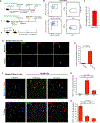

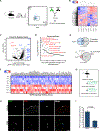
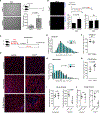
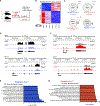
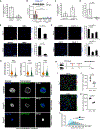
Similar articles
-
Zfp423 Regulates Skeletal Muscle Regeneration and Proliferation.Mol Cell Biol. 2019 Apr 2;39(8):e00447-18. doi: 10.1128/MCB.00447-18. Print 2019 Apr 15. Mol Cell Biol. 2019. PMID: 30692273 Free PMC article.
-
Dormancy and quiescence of skeletal muscle stem cells.Results Probl Cell Differ. 2015;56:215-35. doi: 10.1007/978-3-662-44608-9_10. Results Probl Cell Differ. 2015. PMID: 25344673 Review.
-
Conditional Loss of Pten in Myogenic Progenitors Leads to Postnatal Skeletal Muscle Hypertrophy but Age-Dependent Exhaustion of Satellite Cells.Cell Rep. 2016 Nov 22;17(9):2340-2353. doi: 10.1016/j.celrep.2016.11.002. Cell Rep. 2016. PMID: 27880908 Free PMC article.
-
Characterizing Satellite Cells and Myogenic Progenitors During Skeletal Muscle Regeneration.Methods Mol Biol. 2017;1560:179-188. doi: 10.1007/978-1-4939-6788-9_12. Methods Mol Biol. 2017. PMID: 28155153
-
Human and mouse skeletal muscle stem and progenitor cells in health and disease.Semin Cell Dev Biol. 2020 Aug;104:93-104. doi: 10.1016/j.semcdb.2020.01.004. Epub 2020 Jan 28. Semin Cell Dev Biol. 2020. PMID: 32005567 Review.
Cited by
-
Extracellular matrix: Brick and mortar in the skeletal muscle stem cell niche.Front Cell Dev Biol. 2022 Nov 29;10:1056523. doi: 10.3389/fcell.2022.1056523. eCollection 2022. Front Cell Dev Biol. 2022. PMID: 36523505 Free PMC article. Review.
-
Identification and regulation of EMT cells in vivo by laser stimulation.APL Bioeng. 2025 May 27;9(2):026119. doi: 10.1063/5.0268350. eCollection 2025 Jun. APL Bioeng. 2025. PMID: 40438388 Free PMC article.
-
Denervation alters the secretome of myofibers and thereby affects muscle stem cell lineage progression and functionality.NPJ Regen Med. 2024 Mar 1;9(1):10. doi: 10.1038/s41536-024-00353-3. NPJ Regen Med. 2024. PMID: 38424446 Free PMC article.
-
Loss of transcriptional heterogeneity in aged human muscle stem cells.PLoS One. 2023 May 16;18(5):e0285018. doi: 10.1371/journal.pone.0285018. eCollection 2023. PLoS One. 2023. PMID: 37192223 Free PMC article.
-
Integrative molecular roadmap for direct conversion of fibroblasts into myocytes and myogenic progenitor cells.Sci Adv. 2022 Apr 8;8(14):eabj4928. doi: 10.1126/sciadv.abj4928. Epub 2022 Apr 6. Sci Adv. 2022. PMID: 35385316 Free PMC article.
References
-
- Bolstad BM, Irizarry RA, Astrand M, and Speed TP (2003). A comparison of normalization methods for high density oligonucleotide array data based on variance and bias. Bioinformatics 19, 185–193. - PubMed
Publication types
MeSH terms
Substances
Grants and funding
LinkOut - more resources
Full Text Sources
Other Literature Sources
Medical
Molecular Biology Databases

